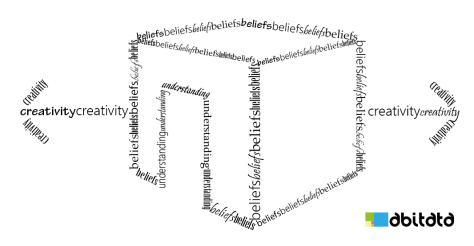Professional environments have changed markedly in the last few decades. In most fields, hierarchical, chain of command processes have been (or are in the process of being) replaced by flatter, side by side forms. Departments are broken into semi-autonomous units, units into smaller cells and self-directed individuals populate each compartment. Very few employees currently rely entirely on someone telling them what, how or even when to do it. On top of this, necessary skill sets have expanded considerably. Previously, a specialist largely focused on their particular core area but, with optimisation for efficiency and profit, positions have been combined and a kind of job creep has taken place. Everyone is now required to be able to play several roles. The butcher, the baker and the candlestick maker has become the Catering and Lighting specialist.
These ongoing changes throw up many challenges but also many opportunities. The stability of a specialisation and job for life may be gone, but the freedom to explore options and self-direct a career path is wider than ever. Being irreplaceable within an organisation is almost non-existent but, the ability to move within and externally is high and the low safety within large organisations can be offset by the chance to take part in startups and small business growth. Depending on how you look at it, these changes may threaten a current position or offer broad opportunities to move. To Stay or to Move?
That is the question, but it doesn’t matter which side an individual favours, both require the same approach. Skill growth.
If you want to stay the same, change.
Many organisations are looking to change. The results enjoyed in the past are increasingly being challenged as globalisation, competition, technology and world events place pressure on process and result. Establishing new value systems, restructuring and shuffling can only bring about limited changes in the development an organisation craves. Large changes are not made in the rules, they are made by the people.
Because of this, organisations expect that actors within will have a change mindset, be willing to learn, follow and promote change as well as be proactive in progressing change processes themselves. This means that if one wants to stay in the same position, it is necessary to develop the job to fit the needs of the changing organisation and therefore build personal skills that fit the new position requirements. Successfully doing this is about as stable as one can make a position in the current business environment.
Of course, this doesn’t cement a position in the organisation. However, if personal and development takes place and one does find themselves on the open job market, a change mindset, enhanced skills and future thinking goes a long way in demonstrating value and securing another role. Or creating one.
If you want to change, change.
As previously stated, the changing environment comes with many opportunities to move and grow but generally, these new opportunities may require skills that were not previously necessary to be a specialist. As a result, many have not actively sought to obtain these skills for two reasons. The first being that to effectively develop, one must understand what is being trained and as this is future based, a lot of uncertainty exists in defining this. And secondly, investing in something that has no demand seems illogical.
Development always requires learning and the pathways are difficult, errors possible and investments can be lost. But, each movement brings more opportunity and learning, deeper information and potential course correction. The more learning that happens, the more real estate for movement opens up.
To see opportunity, one has to be able to identify it and to benefit from it, one has to understand it. In other words, you have to understand before you see. Investing in something before demand has its risks but the upside is that it can stimulate demand whilst simultaneously creating the learning opportunities required. The first drives the second. Waiting for the inverse, demand drives learning, means that it is always a chase to close skill gaps and competition is likely to be higher and the according benefits, lower. The early adopters are both the ones that potentially lose their investment AND make the greatest gains.
Choice comes at a price
Everyone wants the freedom to make their own decisions (at least at some level) but this comes at a price. The price is responsibility. Self-direction comes with consequences. Positive growth is available for the taking, but so are negative results. Leaving decisions up to others may mean that blame can be laid on the shoulders of the decision maker but, allowing them to make the decision is a decision itself and some responsibility must be taken for a negative outcome.
Many are frozen in the headlights of choice, unable to make a decision from so many and questioning their judgement when they do. The paradox of choice is that the more there is, the less decisions get made. And with so many small, inconsequential choices available, difficult, meaningful choices are left unmade. Many people spend hours deciding on which coffee table or car to buy but hardly a thought goes to which professional skills to improve. These crucial decisions are made by default settings that are more likely to be suitable for a past gone, than the coming future.
Make a move
Expecting skills to build in the workplace is a suitable approach but remember that the skills generally learned on the job are skills suitable for that particular job. If the aim is to move to a new position, some different skills are likely required. If one can preempt the upcoming skill requirements of a new position or organisational change and close the learning gap, opportunities are not only easy to identify but also demonstrate willingness and ability for the next position.
Fast learners may only appear so
Fast learners are often fast because they already have a foundation built for the tasks required. They have closed gaps. An organisation can spend months developing a change program and nothing on building the skills in their people required to efficiently implement the changes.
If an individual has invested in independent self-development, when the inevitable changes arrive, one can not only appear as a ‘very fast learner’ but also become a leader within. Once a leader, steps can be made to develop similar skills in all personnel, and a very effective change leader for all future implementations is born through creating future leaders and highly-skilled, self-directed and effective followers. If leadership is not desired, a fast learner is highly prized by leaders in an organisation and is likely to retain a position over another that has an aversion to change.
It is your move
Some may leave personal development up to their organisation, which is fine, but comes with a narrowing of the path. Organisations tend to help personnel be better at their current job rather than close gaps towards a future position or what is in the best interest of the individual. This is natural as the immediate needs of the organisation take the lions share of the attention.
Often though, this comes at a future (unforeseen) cost which may be very high if coming trends are not coupled with the skills necessary to take advantage. In cases like this, an organisation can not only be left wanting, but leave personnel behind the eight ball in a competitive job market.
For an individual, the safer personal option is to actively continue self-development, close gaps, broaden knowledge and skills. Investigate and question current positions, possible positions and desired positions. Find alternative solutions, variations in thought and process and understand the pro’s and con’s of each. This requires investment.
Perhaps money, but more likely the most precious resource of all, time. Spending this time on personal growth activities may be the most important investment you ever make. If your organisation can’t provide you this time resource, personal time has to be used. It is up to each of us to be more than the butcher, baker and candlestick maker. Not because our organisation demands it, but because we require it of ourselves.
If you are a manager, leader, owner or decision maker looking for improved results or continued market strength: commit heavily into investing in your people the best you can. If you are an individual that wants job security and opportunity, don’t leave it up to them.
Taraz



